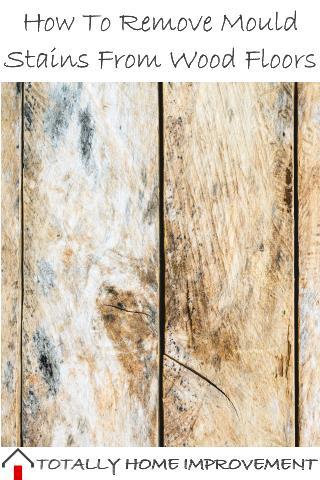
Wooden floors are a beautiful, sophisticated and elegant design idea for any home. Keeping wooden floors clean and in top condition however can seem like a lot of work sometimes especially if your wooden floor has noticeable mould spots and stains within it.
Mould grows when water has been standing on the surface of the wooden floor and the finish has stained, which allows mould to develop. Mould stains are not the end of the world though as they be removed with a bit of elbow grease. Just follow the steps below to get rid of unsightly fungus.
What you will need:
- Vacuum cleaner (with a soft brush attachment)
- Bucket
- Stiff brush
- Clean rags or cloths
- Rubber gloves
- Protective eyewear (glasses, goggles)
- 4 tbsp. tri-sodium phosphate
- 4 tbsp. washing soda
Instructions
- First you must remove as much of the loose mould as you can using a vacuum cleaner with a soft brush attachment (remember to empty the vacuum cleaner immediately afterwards, otherwise mould may grow inside the drum).
- Next, fill a bucket with warm water and add 4 tablespoons of tri-sodium phosphate and mix it together. Now, using a stiff brush and the mixed cleaning solution, scrub the mouldy spots on the floor. Dip the brush into the water frequently but shake off the brush to lose as much excess water as you can - the less water the better when it comes to wooden floors!
- Now you must rinse the floor with a rag and some clean water. You must dry the floor quickly or you’ll end up with further mould on the floor.
- If the mould still hasn’t gone after the first 3 steps, make another cleaning solution by mixing 4 tablespoons of washing soda and scrub it using the same brush until the mould disappears.
- Finally you must rinse and dry the floor thoroughly using a fresh dry rag or cloth. The smallest amount of water left on a wooden floor can cause considerable problems. Once you believe you have finished, get a tissue and place it on the affected area to see if there’s still moisture on the surface.
In the event that none of the above steps worked to remove the mould effectively, you may need to sand the floor (and then of course re-finish the wooden flooring if needs be).
But before you get the sander out, try to remove the mould with some warm water and a pad of wire or steel wool. In this case, it is imperative that you thoroughly clean up the affected area removing any loose steel fibres as these will rust.
General Advice
Use as little water on wooden floors as possible and dry them immediately. Water left on wooden floors for an extended period of time can cause it to warp, which can lead to a whole mess of problems including the buckling, cracking and uprooting of your prized floorboards.
When using tri-sodium phosphate, ensure that the area is well-ventilated, so be sure to open all possible doors and windows. In the interests of health and safety, you must also wear rubber gloves and protective eyewear.
You might also like to read:
• Hardwood Floors Refinishing Guide
• 3 DIY Cleaning Solutions for your Home
• Quick Ways to Clean Your Vinyl Siding
• Differences Between Solid and Engineered Hardwood Flooring
Category:




Comments
These are very helpful and
These are very helpful and easy tips for cleaning the wooden floor and really helpful for me also.
Determine how bad the mold is
It is essential that you fix the mildew in your home as easily as possible whenever you find it. Get somebody to come out and assess the issue. It could just be a small patch of mildew, but it could possibly be growing in your wall and under the carpet too. Having somebody check it out will cost, but you will get reassurance knowing there are not any issues.